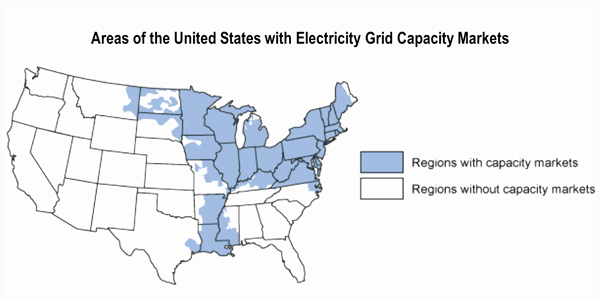By Rich Heidorn Jr.
A coalition of consumer advocates, environmentalists, wind and solar developers and public power laid down a marker in FERC’s resilience docket Tuesday, calling on the commission to “review the design of organized wholesale electricity markets, particularly capacity constructs.”
The group — the American Public Power Association, Large Public Power Council, National Rural Electric Cooperative Association and the Transmission Access Policy Study Group from public power; the Electricity Consumers Resource Council (ELCON) and National Association of State Utility Consumer Advocates, representing load; and green energy proponents Natural Resources Defense Council, American Council on Renewable Energy, American Wind Energy Association and Solar Energy Industries Association — sent a letter to the commission listing five “principles” it said FERC should embrace in future rulings.
The group said the FERC Rejects DOE Rule, Opens RTO ‘Resilience’ Inquiry.)
The principles: technology-neutral market rules; wholesale market rules that respect state and local resource choices and don’t make customers pay twice; allowing self-supply without RTO “second guessing”; no guaranteed recovery of investment costs for particular resources or technologies; and allowing markets “to function and stabilize before new solutions are deemed necessary to be implemented.”
“The capacity constructs include design features that may limit choice, create conflicts with state and local policy objectives, over-procure or unnecessarily retain capacity, and raise costs for customers,” the letter says, calling for avoiding “costly over-procurement.”
“We as a group are committed to contributing to solutions,” the letter continued. “We emphasize that solving this challenge directly and holistically, rather than layering costly Band-Aids on top of organized wholesale markets, will benefit customers most in the long run.”
FERC may ultimately rule that the coalition’s effort to inject a review of the capacity markets in PJM, ISO-NE and NYISO is out of the scope it set in the resiliency docket. The commission directed all RTOs and ISOs to identify their resilience risks; whether they should assess their resource portfolios against contingencies from the loss of key infrastructure; and the bulk power system attributes that contribute to resilience.
The issue is more central in docket AD17-11, the subject of a two-day FERC technical conference in May. (See Power Markets at Risk from State Actions, Speakers Tell FERC.)
But the breadth of the coalition indicates that disenchantment with mandatory capacity markets — which public power has questioned since their inception — has grown as state officials attempt to execute climate policies in the face of markets that ignore carbon emissions.
The group’s letter, however, noted the limits of the alliance, saying, “These design principles work together; individual signatories do not necessarily support every principle if other principles are not also honored.”






